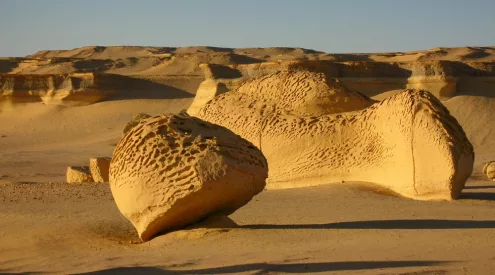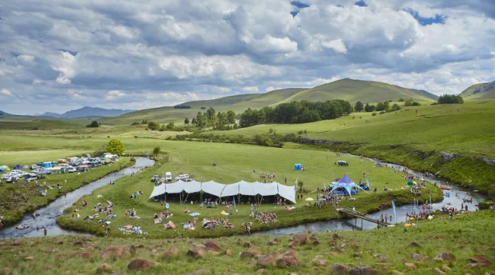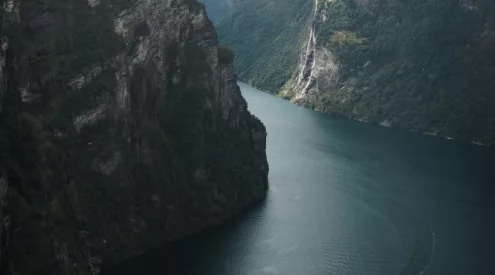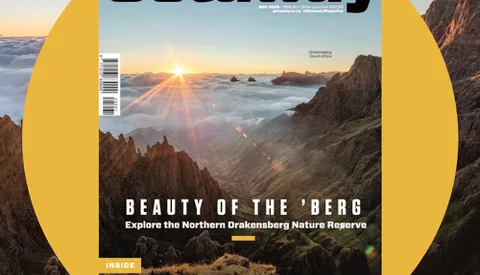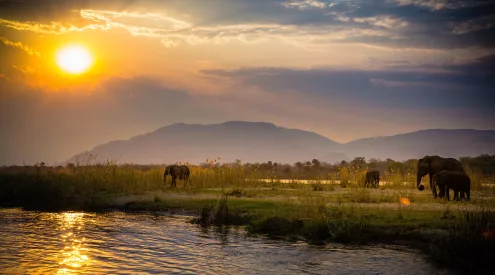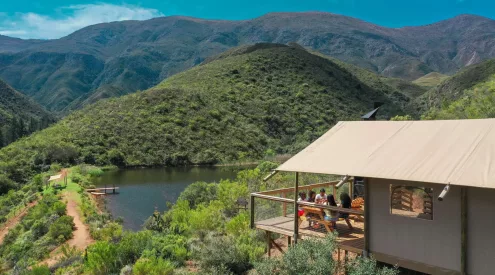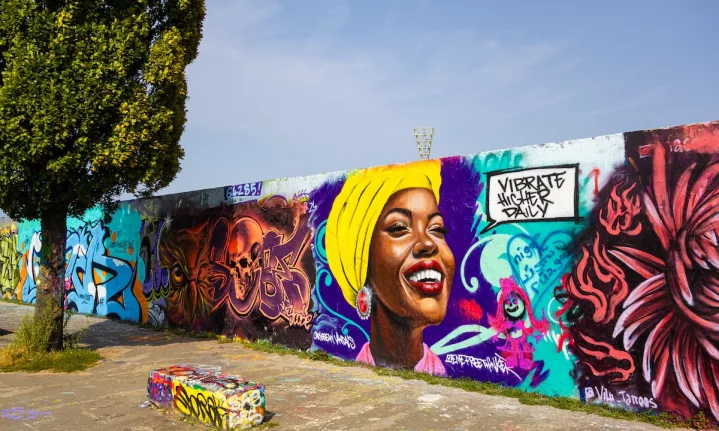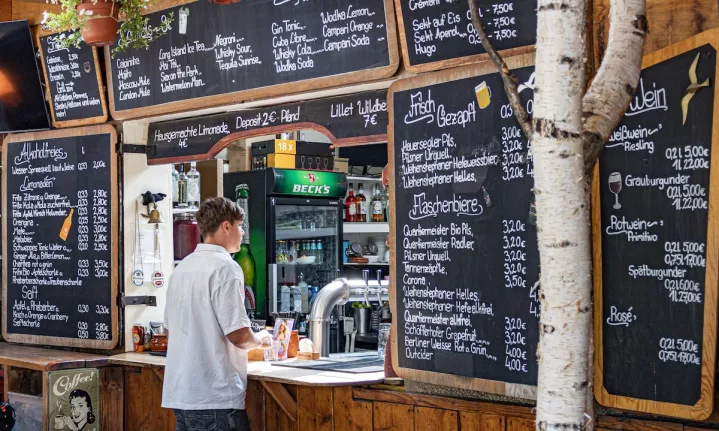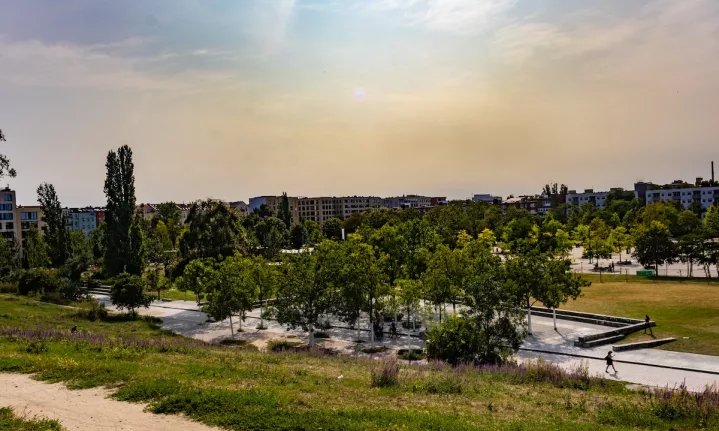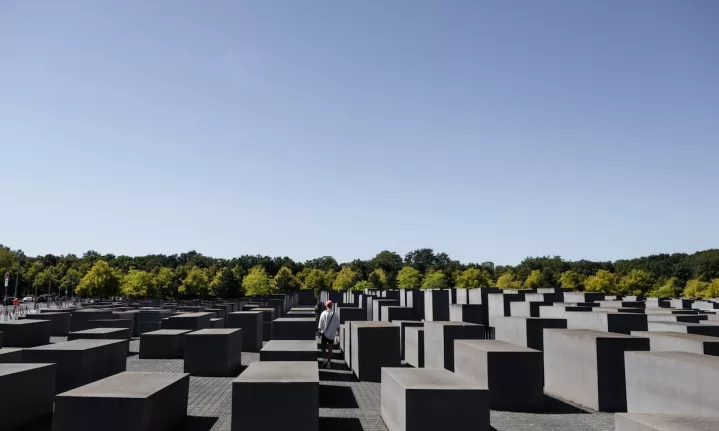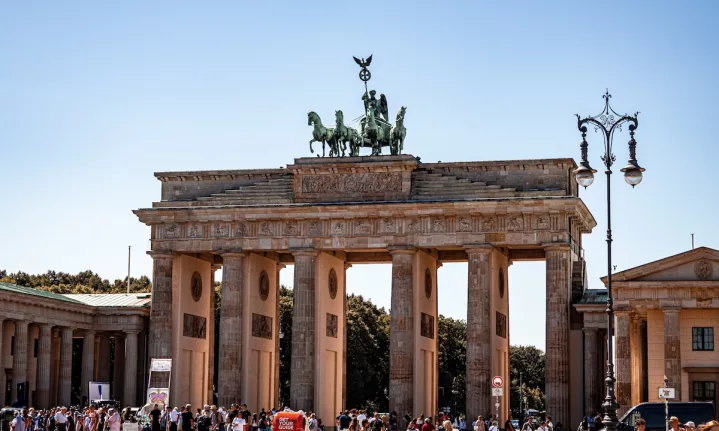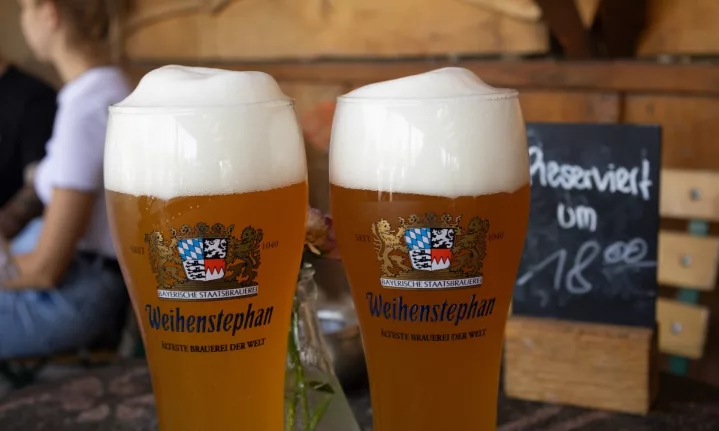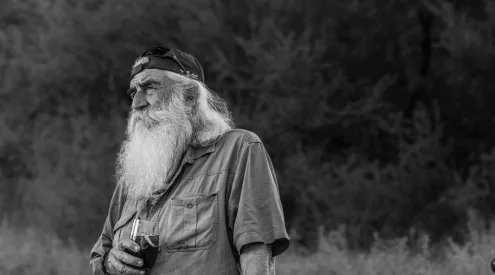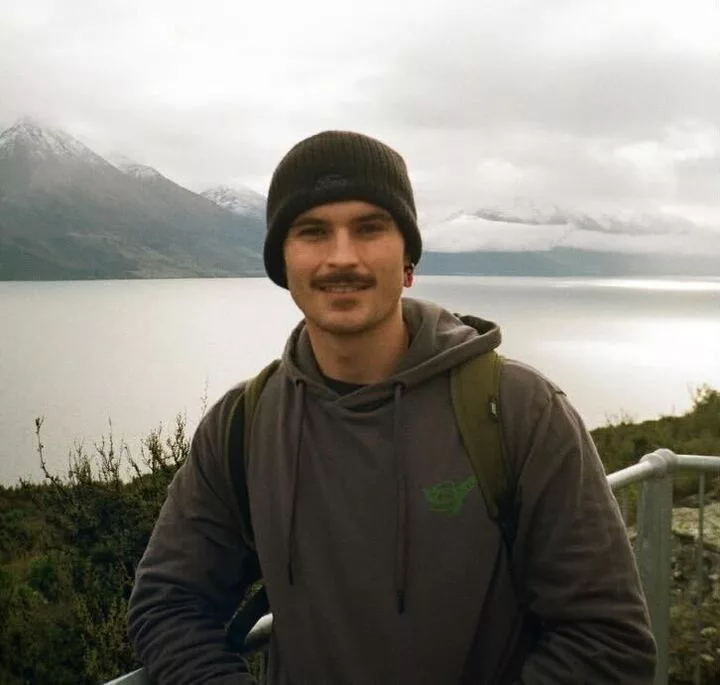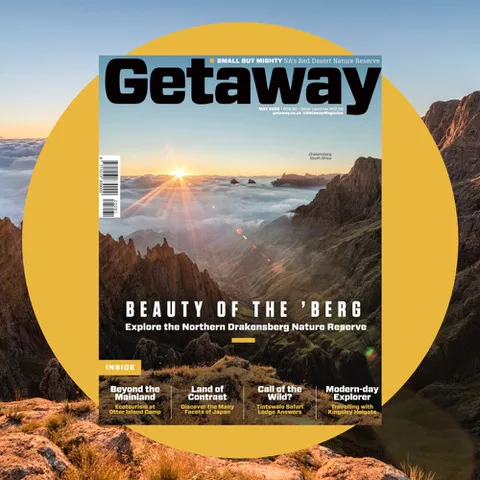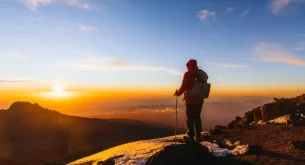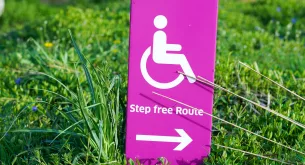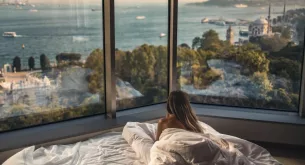Berlin is a fascinating city, with a turbulent, gut-wrenching past. It is largely thanks to this past that the German capital has transformed itself into something extraordinary, a melting pot of culture and taste. Oliver Keohane reflects on five months living there.
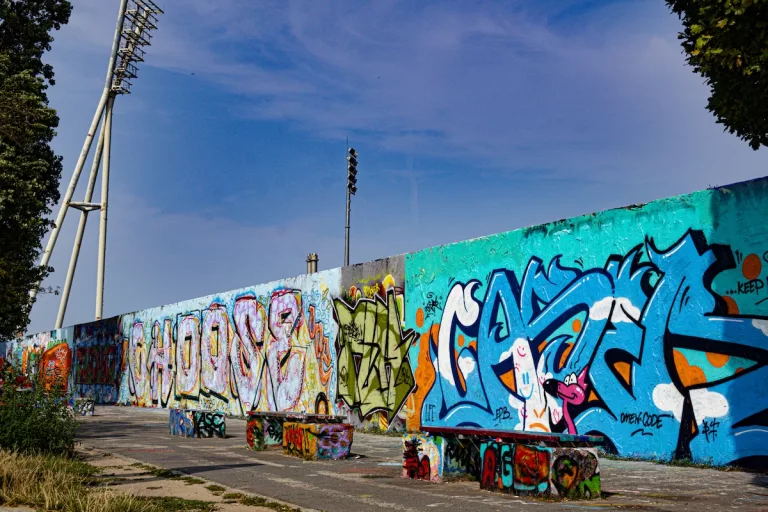
Colourful remnants of the Berlin wall
My Oupa was born into a war-torn Berlin in 1940. At 21 years old, I got my first taste of a very different Berlin. Enamoured by the sleepless, anarchic city, I decided I must try to live there. A few years later, I said goodbye to Cape Town and set off for the Berlin summer, unsure of when I would be back.
I was back sooner than expected. Visiting Berlin and living there are far from the same experience, and I was more firmly tethered to the foot of Table Mountain than I realised. Hiking, driving, camping, running. Mountain, ocean, forest. That’s my fix. So it was an adjustment moving to “The Grey City”.
But throughout the grey is so much colour and character. “Arm aber Sexy” (poor but sexy) is the famous description by former Mayor Klaus Wowereit. “The City of Freedom” is another badge Berlin now wears. It is a city whose past and present co-exist emphatically; the dichotomy of Berlin’s identity is constantly found in the monuments and remnants of war that have been reclaimed in a modern context. Previous markers of oppression serve as famous sites of freedom, and I’ll start at my local to illustrate the point.
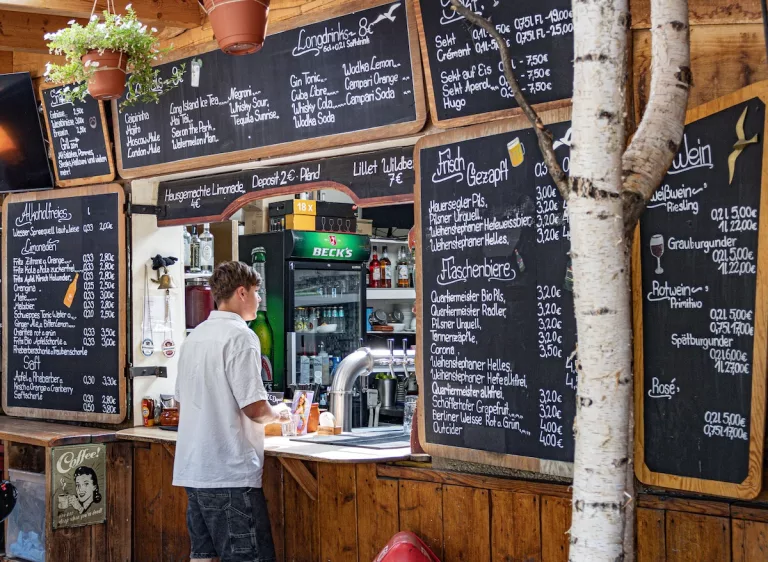
Der Mauersegler
The Weihenstephaner Hefeweißbier – a white yeast beer and the most famous brew from the Bavarian State Brewery Weihenstephan – was the find of my five months in Berlin. I enjoyed many pints of the cloudy amber ale and thick white foam at Der Mauersegler. Rated as one of the top beer gardens in Berlin by popular publication The Berliner Magazine, Mauersegler sits cosily at one of the entrances of Mauerpark, which directly translates as “Wall Park”. Now a beautiful green expanse in central Berlin, Mauerpark was previously part of the “Death Strip”, a heavily guarded area – split between the French and Soviet sectors after the Berlin Wall was built – flanked by pieces of the Wall on either side.
ALSO READ: Queenstown, New Zealand – God’s Own
An 800m stretch of the Wall still stands in the park today, decorated with vibrant graffiti. Below the wall is a stone amphitheatre that comes alive every Sunday with Karaoke and the bustle of a flea market, in a wonderful reclamation of the previously prohibited space. Thousands wander Mauerpark on Sundays, a weekly concentration of the eccentric mix of humans who call Berlin home. Street performers, skaters, and ravers who haven’t slept since Saturday share the same park as elderly couples and young parents who popped in for a stroll and some food from the market.
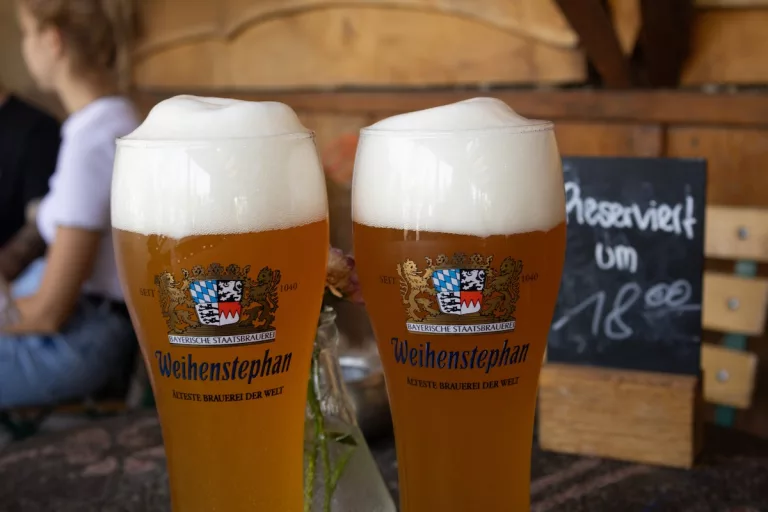
The Weihenstephaner Hefeweißbier in all its glory
Mauerpark is one among many green oases in Berlin, and part of a distinctive park culture necessary to getting a natural fix. Berlin is not a stereotypically pretty city, and the various parks and trees dotted throughout offer reprieve from an otherwise graffiti-filled tangle of brutalist architecture, train stations and chaotic roads. Slightly further out, the many lakes offer a sprawling beauty more similar to what one is accustomed to in Cape Town. My partner and I were first introduced to Krumme Lanke, a woodland lake about an hour outside central Berlin, near the sleepy suburb of Steglitz, with a certain section reserved for naturist enjoyment of the sun and water. Teufelssee is another popular and clothing-optional swimming spot during the summer.
The lake I visited most regularly was Schlachtensee, the largest of the Grunewald lakes. Surrounded by a 7-kilometre forested lakeside path, Schlachtensee is known for its high water quality, beer garden and boat rentals and is one of the easier lakes to visit for a dip, with the entrance located just outside of the S-Bahn (train station). These lakes, like many communal spaces in the city, offer insight into the diversity of individuals and cultures that characterise Berlin. Groups of tattooed naked bodies lounging near the shore share the same sun as the modestly dressed grandparents who have stuck to the lakeside path for a leisurely walk and the water-winged kids who tirelessly splash away in the shallows.
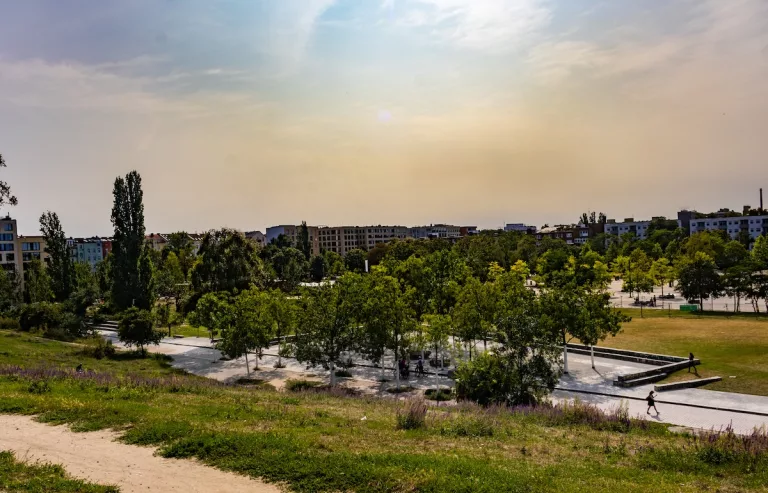
Mauerpark
My cousin once said, “Berlin does not welcome you in with a smile, but it doesn’t care how you look when you arrive.” What I continue to find striking about Berlin is that everywhere you go (at least within the central areas), the population appears to be a tapestry woven together by a random selector. Never have I experienced such concentrations of difference, be it in age, gender, sex, self-expression, style or wealth. Sure, the city has its nicer areas and grungier hideouts, but for the most part, different worlds co-exist, and nobody really cares. One of these worlds is the techno and electronic music scene. It is not a tired stereotype, it is a fundamental part of Berlin’s make-up. The techno and underground rave culture of the 90s, birthed in old bunkers and industrial buildings, was at the heart of the city’s reunification following the fall of the Berlin Wall. Over 30 years later, thanks primarily to the non-profit movement Rave The Planet, the “techno scene” has been added to Germany’s national intangible cultural heritage list compiled by the German Commission for UNESCO. There is no shortage of reading material on the endless club nights, the door policies and what happens where no phones are allowed, but the essence of club culture in Berlin is best understood inside the clubs themselves. Go to at least one if you get the chance, get a local to point you in the right direction.
ALSO READ: The Pebble and the Power of Time, with Kingsley Holgate
There is also no shortage of monuments to visit during the daytime. Four months is not nearly long enough to explore and understand the complex, war-torn history of Berlin, but there are a few sites to consider that won’t cost more than your time. The Memorial for the Murdered Jews of Europe is a haunting, powerful work of art established by the German parliament as a central memorial site to the Holocaust. Designed by architect Peter Eismann, the Memorial is made up of 2711 concrete stelae spaced over a site covering 19,000 square meters. The memorial is accessible from all four sides, day and night, and as you ride the sloped ground through the different-sized concrete monuments, a sinister weight of consideration sets in – The desired effect of a site designed as a “place for contemplation, a place of remembrance and warning” (as specified by visitberlin.de.) While visitors can pay for a tour, one can also walk freely through the Memorial.
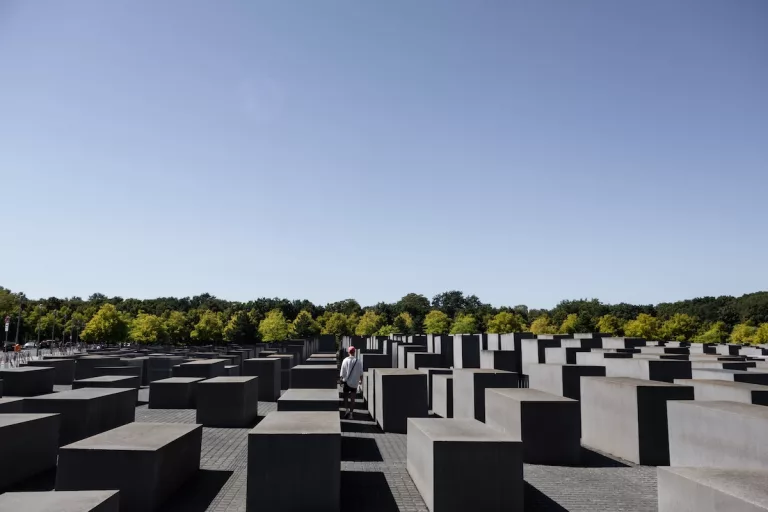
The Memorial
Not too far from the memorial is the Brandenburg Tor (The Brandenburg Gate), arguably Berlin’s most famous landmark. An epic reminder of the city’s conflicting identity, the Brandenburg Gate, once a symbol of German division during the Cold War – located in a restricted area and accessible to neither the East nor the West – now stands as a monument to German unity. The enormous sandstone structure is over 200 years old and is considered one of the most beautiful examples of classicist architecture.
For a big city, Berlin has a lot of history concentrated into one area, and from the Brandenburg Gate, one can easily reach the Siegesäule. The “Victory Column” stands regally at the centre of Tiergarten, right in the middle of Berlin, as a monument to the Wars of Unification. You have the choice of observing its magnificence for free from outside, or paying four euros and making the pilgrimage to the top. A gallery on the bottom floor gives a detailed description of Berlin’s history, accompanied by scale models of monuments in Berlin, wider Germany and other important cities around the world.
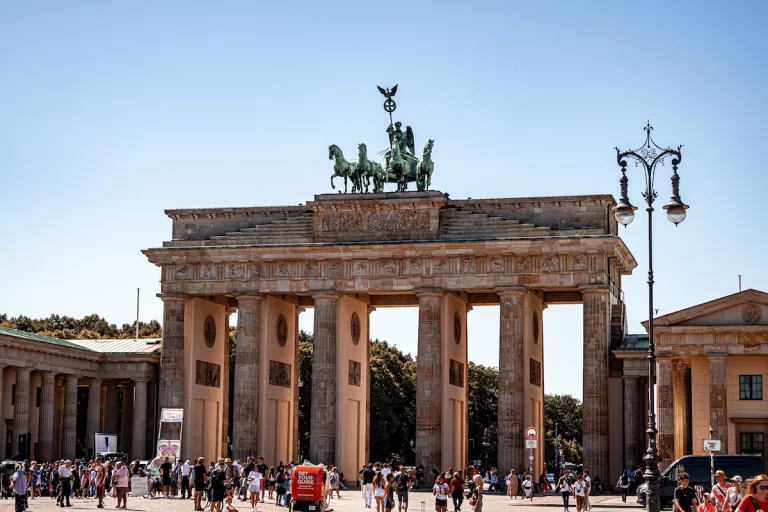
The Brandenberg Gate
You can find all these tourist attractions online (and many more than I have mentioned in the preceding paragraphs). You can find most of the events and club nights on Resident Advisor, and listicles of the best lakes are available in abundance with a quick Google search. What you can’t quite grasp, until you have visited Berlin, is this: You are waiting at a train station named in honour of an anti-war activist, standing next to a group of people in their 20s with multicoloured hair and face piercings on your left and on your right a middle-aged woman with her dog and grocery bag is lost in her AirPods. You’re on your way to party in an old heating plant.
There is a haunting history to the structures of Berlin. But the buildings that cannot hide the scars of their past play home to a liberal, creative and expressive future, unlike anywhere else I have known. To live in Berlin is to marvel at how these two things exist at once, and to explore the absurdity in between.
Images: Oliver Keohane
Follow Oliver’s adventures on Instagram.
Follow us on social media for more travel news, inspiration, and guides. You can also tag us to be featured.
TikTok | Instagram | Facebook | Twitter

